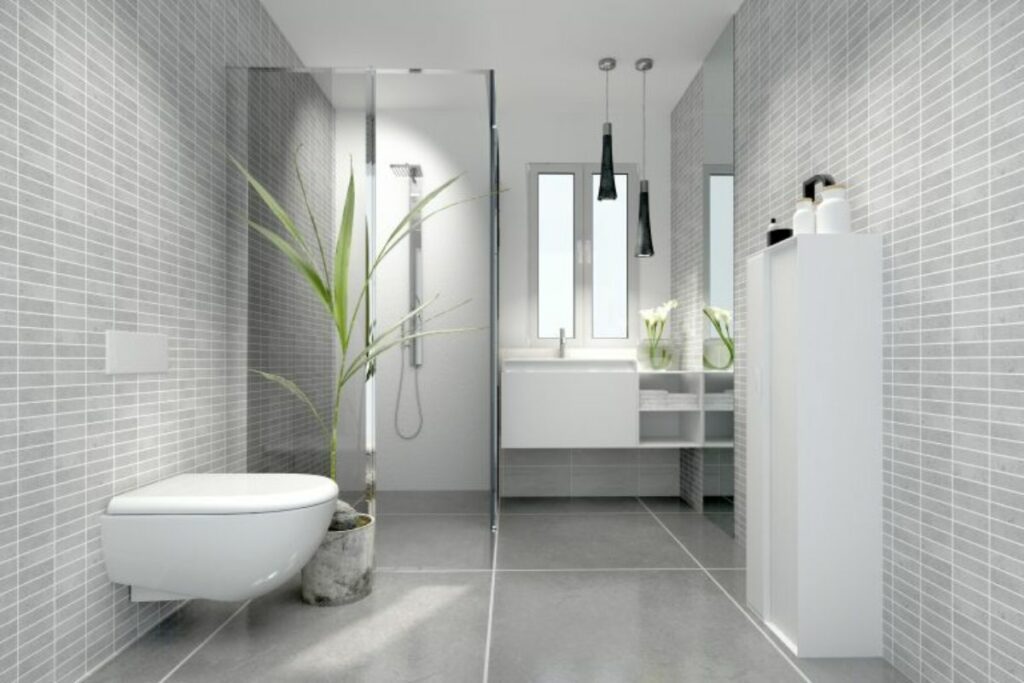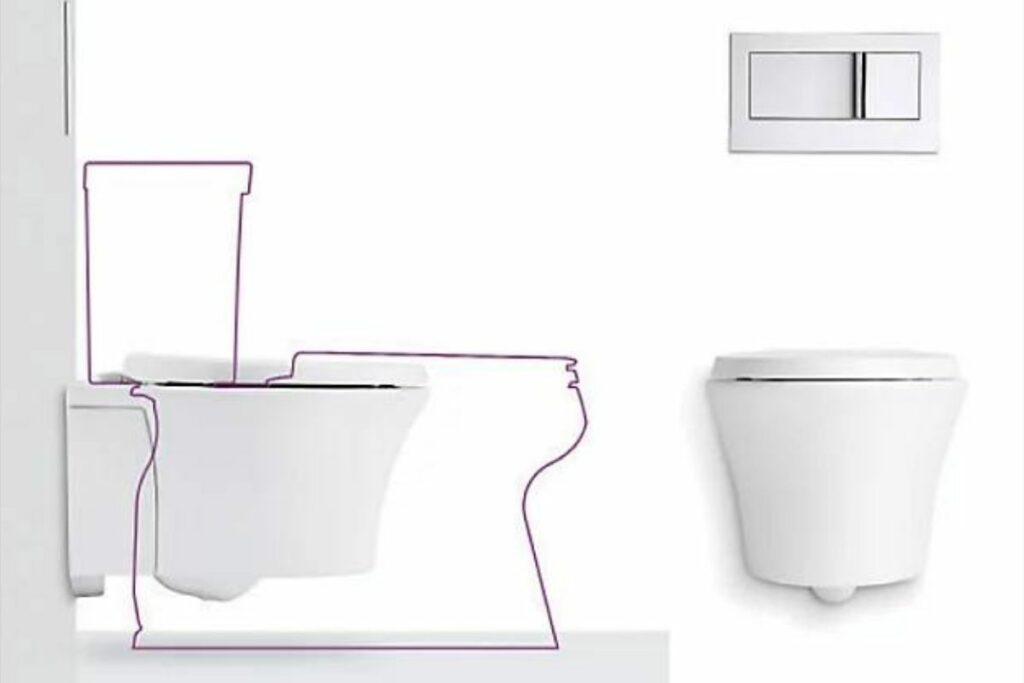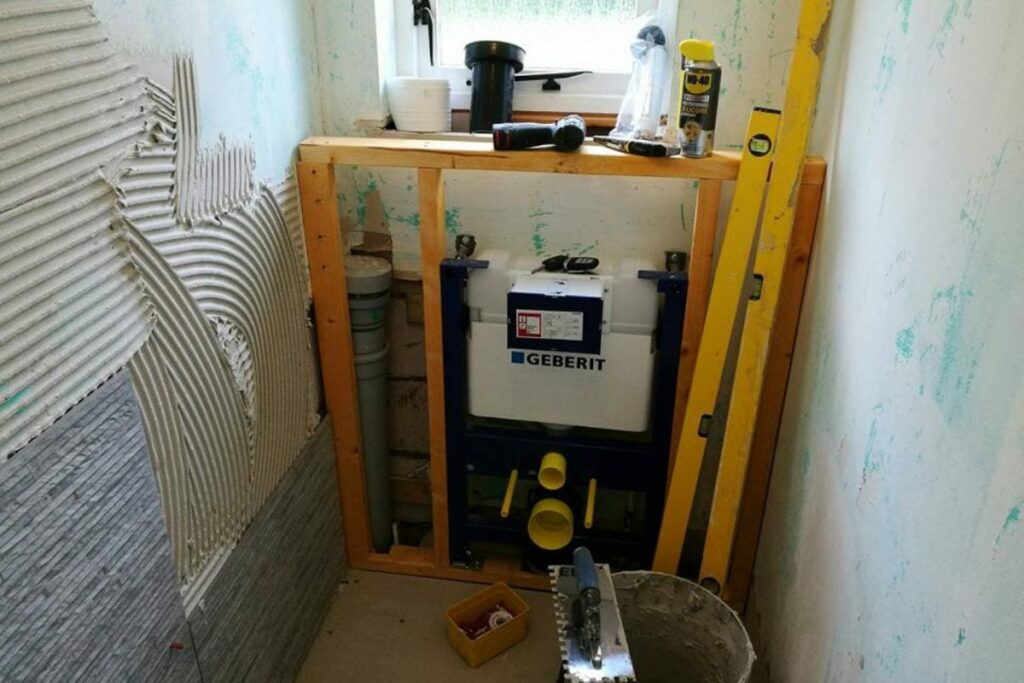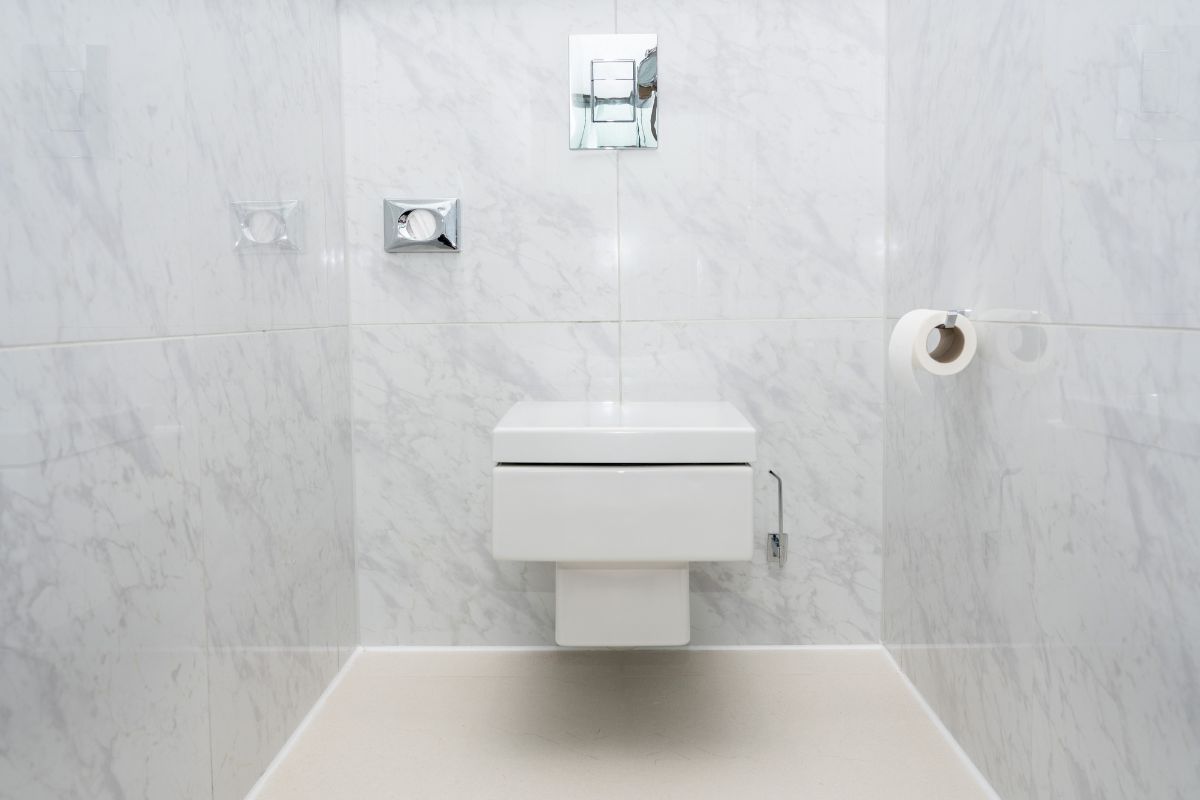Wall-mounted toilets aren’t as common as floor-mounted toilets. A regular toilet is tried and true and works perfectly well. So, today I will explain the advantages and disadvantages of a wall-mounted toilet.
Overall, the advantages of a wall-mounted toilet are that it’s easier to clean, there is more space in the bathroom, the toilet isn’t as loud, and it has a modern look. The disadvantages are that it’s harder to install and repair, and it’s more expensive.
To understand each of these advantages and disadvantages it’s important to know how a regular toilet and a wall-mounted toilet are installed, and how they work. Below, I will provide a more in-depth explanation of each of these factors. As well as, how they differ in price to buy and install.
1. Pro – high-end, minimalist, modern look

The first advantage of a wall-mounted toilet is how they look. Because the water tank is installed in the wall the only thing you see in the bathroom is the bowl. It also doesn’t have the base that bolts into the floor. This gives a bathroom a more minimalist, and some could argue a more stylish, expensive, and modern look.
2. Pro – easier to clean than a floor-mounted toilet
There are 2 types of floor-mounted toilets. There are skirted and non-skirted floor-mounted toilets. A skirted toilet has a base that curves outwards. Whereas, a non-skirted floor-mounted toilet goes straight down to the floor.
Non-skirted toilets are similar to wall-mounted toilets in how easy they are to clean. Although this is the case, wall-mounted toilets are still easier to clean than a regular toilet.
The reason is there is no joint between the floor and the toilet, where grime and urine can accumulate. The total surface area of the bowl that can get dirty from urine, dust, and hair is also less. Because the underside of a wall-mounted toilet is vertical and on the underside, it makes it very difficult for anything to get on it.
3. Pro – saves more space in the bathroom [mostly]
The water tank on a wall-mounted toilet is hidden behind the wall which takes up less space in the bathroom. The area under the toilet is also completely free. But, this is only a slight advantage because there isn’t a very good place to keep anything.

It’s also possible that a wall-mounted toilet will in fact take up more space. The reason is that a water tank needs a certain amount of space. This can require a ‘fake’ wall to be installed to accommodate the water tank. Which in effect takes up more space than having a regular toilet. But, typically a wall-mounted toilet won’t still out as far as a regular toilet.
For a new build, a bit of planning can allow for a wall-mounted toilet to take up much less space, if the wall is constructed slightly thicker when it’s built.
4. Pro – the flush isn’t as loud
The water tank on a wall-mounted toilet is located within a wall. This reduces the sound caused when it’s flushed. A lot of the sound comes from the toilet entering the bowl.
But, the sound of the water tank filling back up, and the flush noise produced in the water tank as the water flows out into the bowl is reduced. A bit of soundproofing foam or similar can also be installed to reduce the sound a toilet makes even further.
5. Con – more difficult to install and fix
A requirement of installing a wall-mounted toilet is that the water tank needs to be installed in the wall. This is more complex than a regular toilet. The process to install a floor-mounted toilet is to place the toilet on the floor, bolt it in, connect the sewage pipe, and connect the water inlet valve. The water tank comes with the toilet so nothing additional is required to install it.

A wall-mounted toilet by comparison requires a steel bracket to be installed into the wall, this is often installed at the same time as the water tank. The toilet bowl then needs to be screwed into the frame.
After that, the sewage pipe, and water inlet pipe need to be connected. This is overall more work, and more tricky because the wall frame creates a limiting factor. An experienced contractor will make light work of it. However, the fact remains that installing a wall-mounted toilet is more complex than a regular toilet.
If there is an issue with the water tank, it’s very inconvenient to fix. Fingers crossed there won’t be any issues. But, after a year or two, there can be a build-up of hard water deposits or mold inside the tank. And to access it the wall will need to be opened.
Many wall-mounted toilets have a fitting on the front, that allows the water tank to be accessed. But, the opening is fairly small and although it’s possible to diagnose an issue and repair it, it’s more difficult than a regular toilet. Where the lid of the water tank can be lifted and all parts of the toilet are very easy to access.
6. Con – They are more expensive to install
Some people have reported that wall-mounted toilets are more expensive than floor-mounted toilets. Which is partly true. The cost to buy the actual toilet is very similar between a floor-mounted toilet and a wall-mounted toilet.
This can be seen by looking at the price range on big well known websites like Home Depot and Lowe’s. But, the price does not include the water tank, which needs to be purchased separately. These vary anywhere from $200 to $500 depending on the model of the water tank. This adds a considerable amount to the total cost of a toilet.
The cost to install a wall-mounted toilet is also higher. According to Fixr.com, to have a floor-mounted toilet installed costs $180. Whereas, a wall-mounted toilet costs almost double that at $350.

Amos Christen graduated with a bachelor’s degree in Interior Design from Drexel University — Philadelphia, PA. Since 2003, Amos has worked with top interior design professionals in this area, including architects and interior/graphic/lighting designers. As a skilled interior designer, Amos Christen is highly versed in fine arts and crafts and uses that to supplement his main area of expertise. He often publishes articles related to home décor on several websites, including Sprucetoilets.com, Sprucebathroom.com, and Mybesuitedhome.com. He also contributes to leading interior design magazines.
